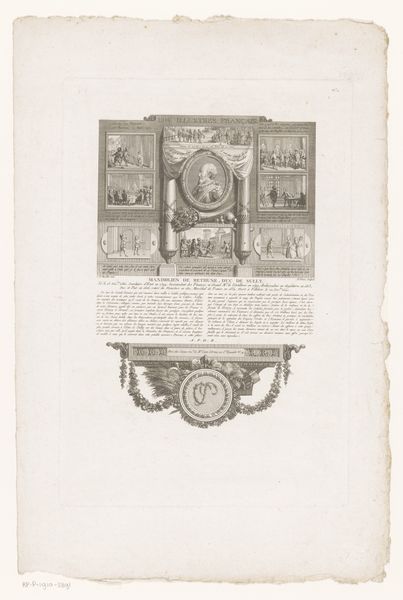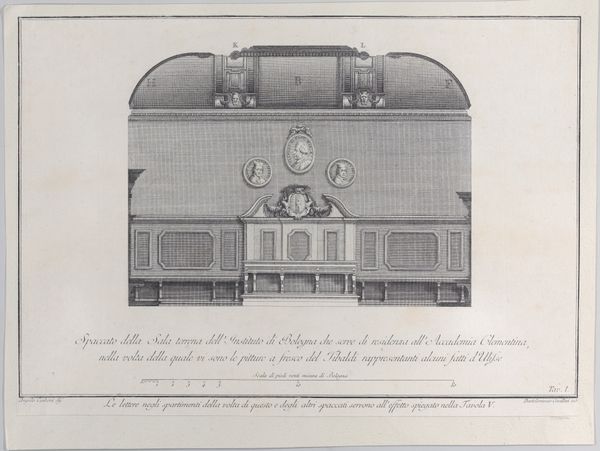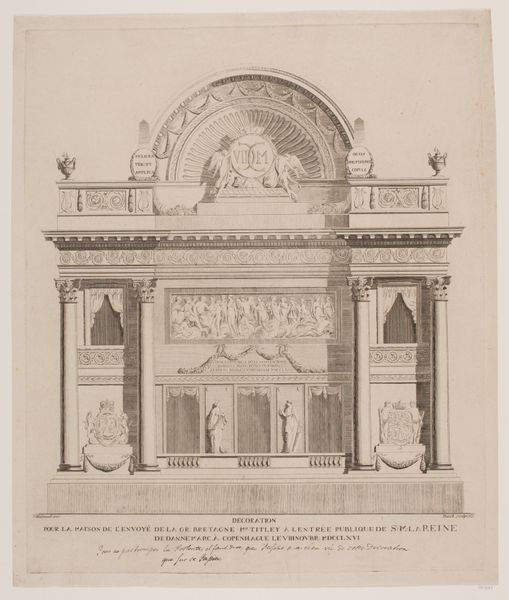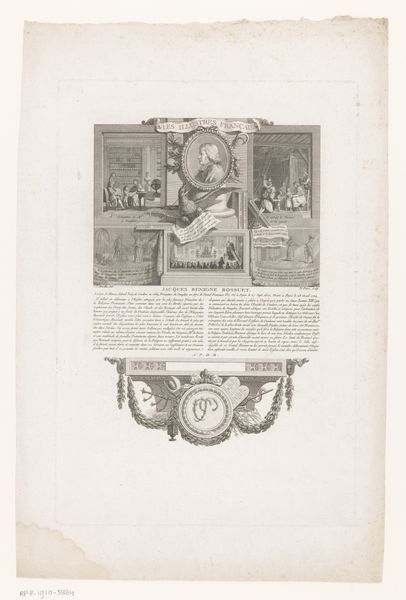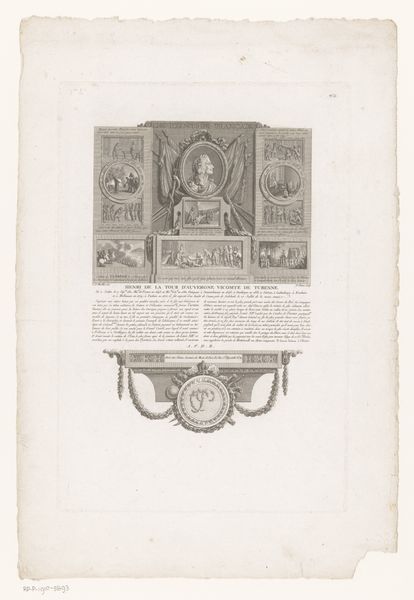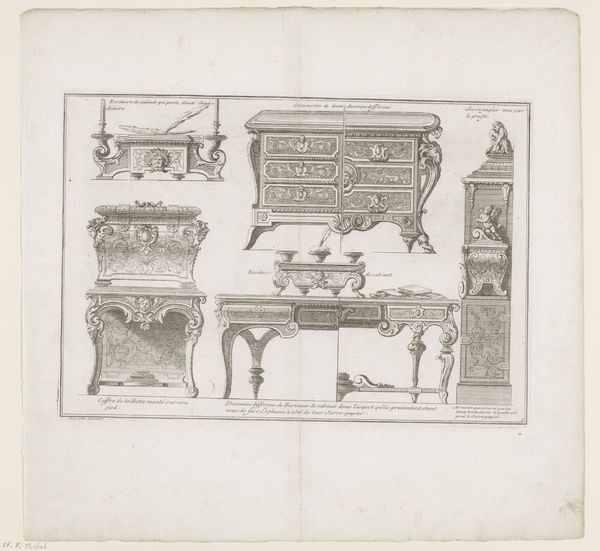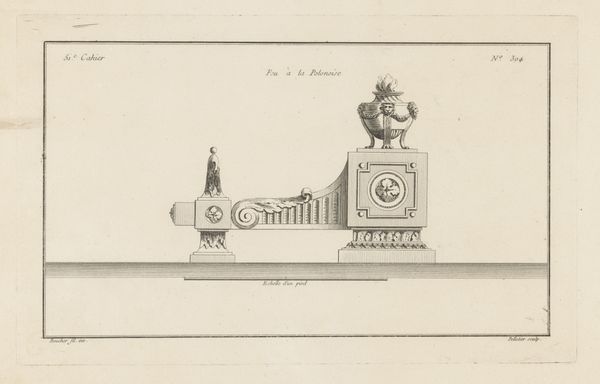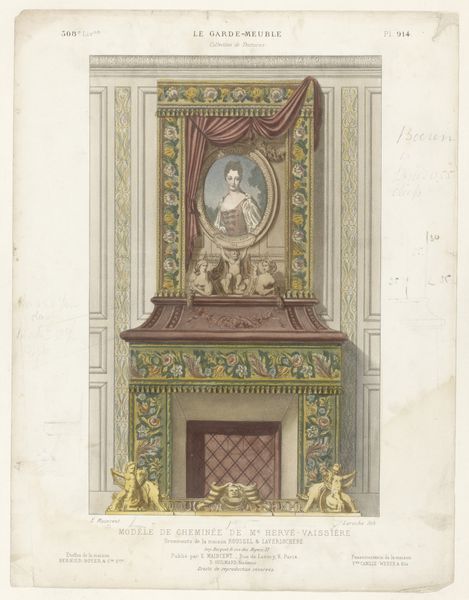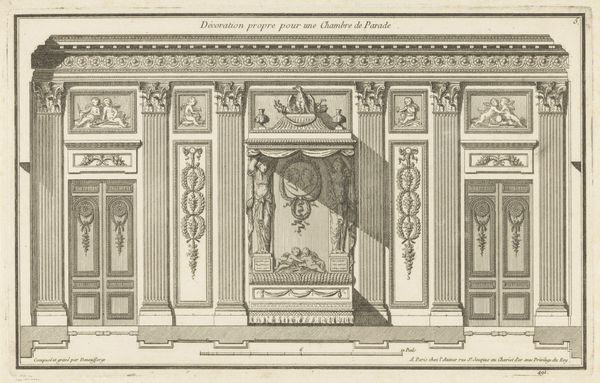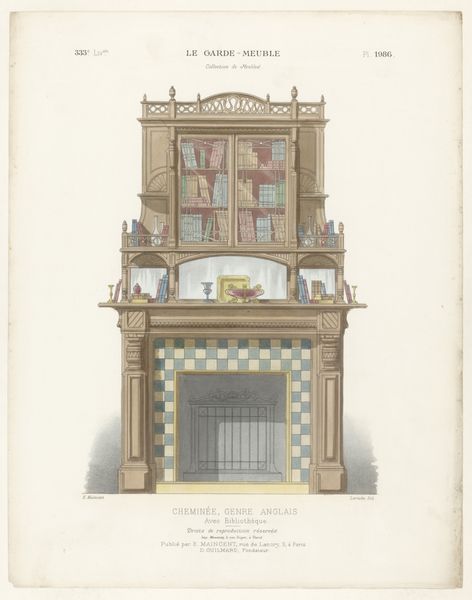
drawing, watercolor
#
drawing
#
neoclacissism
#
watercolor
#
cityscape
#
watercolour illustration
#
genre-painting
#
history-painting
Dimensions: height 246 mm, width 305 mm
Copyright: Rijks Museum: Open Domain
Editor: This watercolor drawing, titled "Vernietiging der Aristocratie, decoratie op de Westermarkt, 1795," captures a city scene. It feels very staged, almost like a theater set, with this central image of a man battling a serpent. How would you interpret its message? Curator: This piece reflects the radical shift in Dutch society at the time, specifically during the Batavian Revolution. The depiction of Hercules slaying the Hydra symbolizes the destruction of aristocracy. Think about it – a public decoration meant to illustrate the triumph over a long-standing power structure. Who would commission and erect such a display? Editor: So it's not just a pretty picture; it's a politically charged statement showcased in a public space? Curator: Precisely. It reveals the new regime's desire to publicly dismantle the old order and propagate their ideologies. The location, Westermarkt, known for public gatherings, reinforces the deliberate intent to engage the populace. Do you see the neoclassical architectural elements used in the decor? Editor: Yes, I noticed the symmetry and classical figures flanking the central image. How does neoclassicism play into the revolutionary message? Curator: Neoclassicism was seen as a return to reason and order, contrasting with the perceived decadence of the aristocracy. So, by adopting this style, the revolutionaries sought to legitimize their power and connect themselves with an idealized past. Editor: I see. It's all connected – the symbolism, the style, the location. Everything contributes to the artwork's function as political propaganda. Curator: Exactly! It underscores how art is intertwined with broader social and political currents. What’s your take away from it? Editor: That art isn’t created in a vacuum. Analyzing the historical and political context helps unlock deeper layers of meaning.
Comments
No comments
Be the first to comment and join the conversation on the ultimate creative platform.

